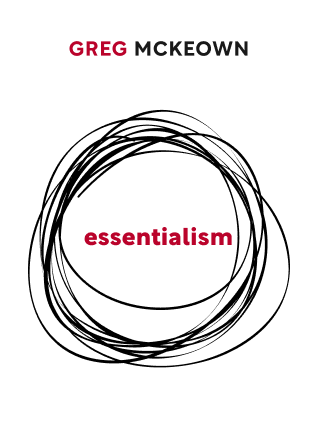

This article is an excerpt from the Shortform book guide to "Essentialism" by Greg McKeown. Shortform has the world's best summaries and analyses of books you should be reading.
Like this article? Sign up for a free trial here .
Do you often find yourself engaged in activities that go against your priorities? How do you create a routine that keeps distractions at bay?
According to research, almost 40 percent of our choices are unconscious. No wonder, we get stuck in unproductive patterns that sidetrack us from our priorities. To break free from these habits, you must create a routine that makes executing on priorities automatic.
Here are some tips on how to create a routine that makes it easy to execute on priorities and avoid distractions.
How to Create a Routine That Works for You
Establishing a consistent routine is a powerful technique for executing on your priorities and decluttering your life. When you create a routine, you can execute automatically without expending energy on figuring out what’s next. It also helps you counter the pull of unproductive distractions. Here are some principles for breaking unproductive patterns and replacing them with routines that make executing your priorities automatic:
1) Change your cues. The reason it’s difficult to change a bad habit, such as eating junk food, is that the habit is reinforced by a powerful mental loop consisting of a cue, routine, and a reward.
As Duhigg explains in The Power of Habit, the cue sends your brain into automatic mode and launches the routine or behavior. The behavior generates a reward that reinforces the habit for the future. The loop becomes neurologically set. For instance, seeing a particular doughnut shop on your way to work (the routine) is a cue to stop and get a doughnut (thebehavior), and your enjoyment of the doughnut is the reward reinforcing the behavior for next time.
To change a habit, reassociate the cue that’s triggering the nonessential activity with a different, essential activity. For instance, when you see the doughnut shop on your way to work, use the cue to remind you to buy something healthier from the deli across the street. If your alarm going off in the morning triggers you to check your email, use it as a cue to do something else, such as stretching exercises.
At first, repurposing a cue is difficult, but each time you repeat the new behavior you strengthen the mental link between cue and behavior. That’s how you create a routine—by wiring the association deeper into your neurocircuitry with each repetition.
2) Create new triggers. Besides reassociating old cues with something else, you can create new cues to trigger new routines. For example, the author created a new cue to develop the daily routine of writing in a journal.
For a long time, he’d written only sporadically, and would procrastinate. So he decided to make it less daunting by writing only a few lines at the same time each day. To generate a cue, he started carrying his journal in his bag next to his phone. Whenever he pulls out his phone to charge it each evening (already a habit) he sees the journal, which is his cue to write a few lines. The process has become instinctive and he looks forward to it.
3) Do the hard thing first. Create a routine of doing your most difficult task the first thing in the morning. Find a cue (something you’re already accustomed to, like your first cup of coffee) to trigger you to focus on it.
4) Have multiple routines. To avoid getting tired of your routines, create a routine for each day of the week. Jack Dorsey, co-founder of Twitter, divides his week into themes — for instance, Tuesdays are devoted to product development, Wednesdays to marketing, and Fridays to company and culture. Colleagues organize meetings and requests around these routines.
5) Change one routine at a time. Instead of trying to change multiple habits or start several new routines at once, start with one change and build on your progress from there. Starting new routines is challenging but it pays off in energy savings once they become automatic.
Your Brain on Routine
Routines make challenging things easier, although the reasons aren’t entirely clear. It may be that as you repeat something, you strengthen neural connections, making it easier for the brain to activate them. For example, it takes several repetitions and applications of a new word before you learn it. Once you’ve activated the same synapses or connections repeatedly you know the word without consciously thinking about it. Similarly, you can eventually make a familiar meal without looking at the recipe or drive the same route routinely without thinking about it.
In the same way, your ability to execute tasks gets better with practice, until the tasks become routine. And when you follow a routine, mental space is freed up. You can perform one task flawlessly while thinking about another. In The Power of Habit, Charles Duhigg notes the brain can almost shut down when performing a routine, allowing you to focus on something else.
The wrong routines can be boring and stifle creativity. However, the right ones boost creativity by saving mental energy that you can redirect to another activity.
One researcher noted how creative people create a routine to free up their minds. They learn their most effective patterns for sleeping, eating, and working and stick to them. They wear comfortable clothes and limit their interactions and activities. Freed from external distractions, they can concentrate on their art.
Olympic swimmer Michael Phelps followed the same routine at every race, arriving two hours early, stretching, warming up, and so on, all in a specific order. He had a string of steps and activities mapped out, all the way up to the point when he finally walked to the starting blocks, dried the blocks, flapped his arms, and got into position. He also had a visualization routine of imagining the perfect race, ending with him winning, which he ran through his mind every morning and evening.

———End of Preview———
Like what you just read? Read the rest of the world's best book summary and analysis of Greg McKeown's "Essentialism" at Shortform .
Here's what you'll find in our full Essentialism summary :
- How to do less but to do it better
- Why you need to be disciplined in your pursuit of less
- How you can learn to say no






